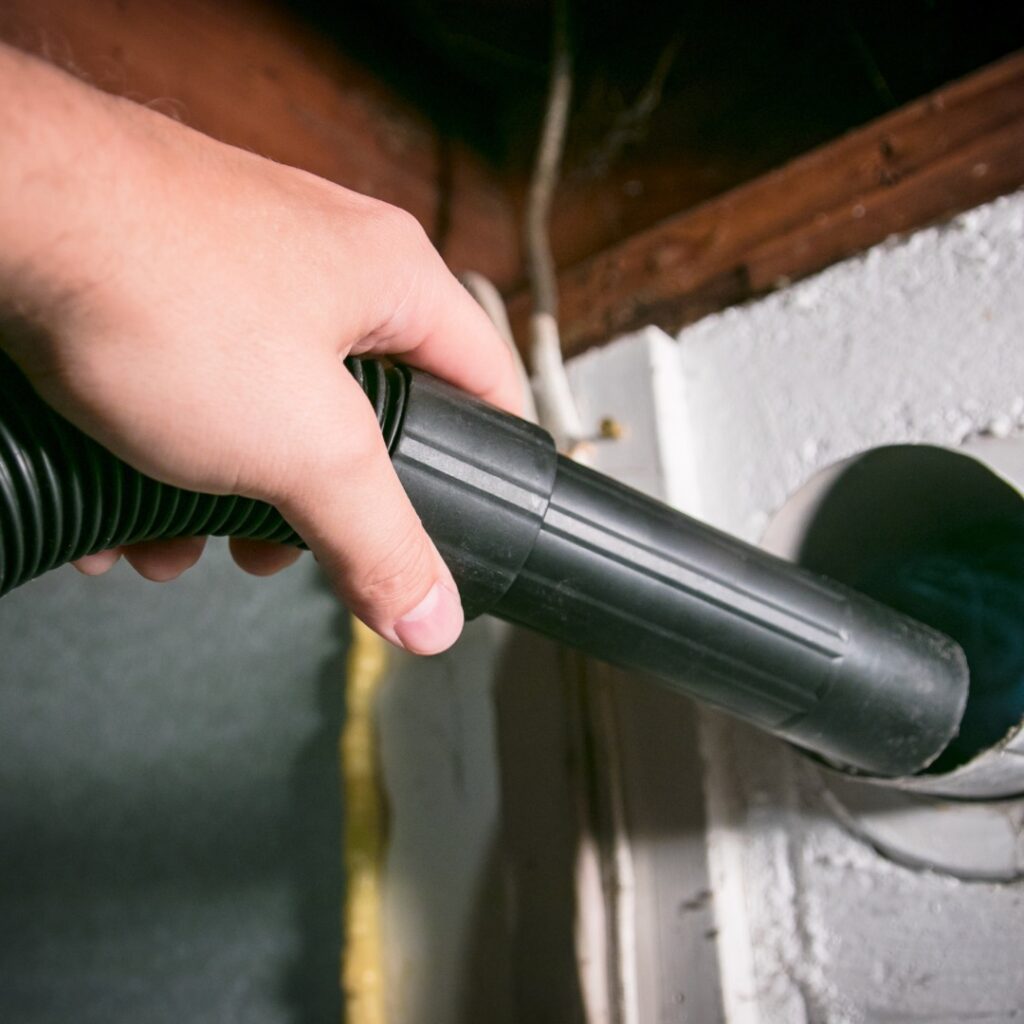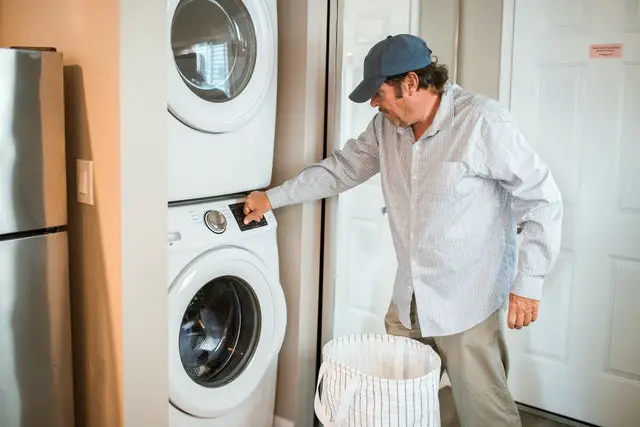You probably aren’t aware of the hidden menace lurking within your laundry room – a dirty dryer vent.
Accumulated lint in the vent can impede airflow, compelling the dryer to operate at full throttle and overheat.
This scenario can quickly escalate into a fire, leading to disastrous consequences.
In fact, appliances sparking up house fires commonly point back to an unclean dryer as the guilty culprit.
This highlights the essential nature of regular dryer vent cleanups.
One of the most effective and effortless ways to achieve this is by utilizing a vacuum cleaner.
Vacuuming your vent eradicates loose lint and debris, ensuring improved airflow and significantly reducing the risk of fires.
In this resourceful guide, we will walk you through a safe and efficient method for vacuuming your dryer vent.
Additionally, we’ll provide indispensable tips on how to effectively prevent dryer-incited fires.

Can I Vacuum My Dryer Vent?
Having a clean dryer vent is more than just about ensuring your clothes dry properly; it’s about safety.
Thousands of fires each year are attributed to lint accumulation in dryer vents.
So, it stands to reason that many people wonder if they can use their vacuum cleaners to keep their dryer vents spick-and-span.
The answer is yes.
You can most definitely use a vacuum cleaner like shop vac to remove lint and dust buildup in the accessible parts of your dryer vent.
Regular vacuums with hose attachments can be really useful tools for this chore.
They’re capable of sucking up lint around the opening of your dryer’s exhaust vent and even the crevices inside your dryer’s lint trap.
You can also stuff them into the dryer vent duct with a brush attachment to loosen debris and lit while simultaneously sucking them with the vacumm.
How To Clean Out Dryer Vent With Vacuum
Here’s how you can clean out your dryer vent using a vacuum with ease.
Interior Dryer Vent Cleaning: Step By Step
Begin by unplugging the dryer or switching off the gas valve and carefully disconnect the gas line.
Loosen the clamp holding onto the vent hose with a screwdriver or pliers, pull it off and set it aside.
The lint trap then should be removed from the dryer.
Use your vacuum’s hose attachment to remove any lint or remnants.
A dryer lint brush is helpful in reaching further into the trap for thorough cleaning.
Go ahead and vacuum out any dust or lint spotted at the vent opening located on your dryer’s rear – where you previously detached the duct.
Next, prepare to clean out your vent duct
A vacuum with a flexible hose attachment does this well, but a dedicated dryer vent cleaning kit paired alongside it works better.
Insert your brush and vacuum nozzle into one end of your duct pushing as far in as possible (while simultaneously twisting and pulling the brush out) to loosen lint before pulling it back out. Repeat this procedure from either side of the hose until no more lint is seen during extraction.
Once done, securely reattach your cleaned vent duct to your dryer using its clamp ensuring no kinks or bends occur that would restrict proper airflow.
If you have gas dryers, reconnect gas lines before turning on the gas valves again. Lastly, plug in your now cleaner and safer machine testing it for correct operation.
The Exterior Cleaning Guide
For cleaning the duct that runs all the way to the exterior, first Identify and locate the external vent cover which typically consists of metallic or plastic hoods housing flaps that open and close during drying processes – usually positioned on exterior walls parallel to where your internal machine sits.
Carefully remove these covers – unscrew them if required while exercising caution not to cause damage to underlying sidings or covers themselves.
Use either a vacuum once more equipped with a flexible extension or leaf blower to extract any lodged debris or lint within these external vent openings efficiently. A designated dryer brush successfully removes stubborn lint stuck onto interior wall surfaces too.
Once thoroughly cleaned, it’s time to reassemble the cover by securing it in place using clips or screws as deemed necessary.
Ensure that once replaced; these covers fit correctly without hindrances while operating their opening-closing mechanism appropriately.
Upon completion of exterior cleaning; head back indoors initiating a test drying cycle with damp clothes checking improvements in overall performance efficiency and reduced drying times.
How Often To Vacuum Dryer Vent?
Dryer vents should be cleaned out from both ends (inside and outside) at least once annually.
However, don’t just mark the calendar and blindly follow this guidance.
Stay vigilant for signs of clogging or underperformance that could necessitate more frequent cleanings.
Symptoms like longer drying times, overheating, burnt smells emanating from your laundry area, or clothes still damp after a complete drying cycle all hint towards possible lint build-up in your vent system.
These symptoms shouldn’t be ignored as they can potentially lead to larger problems.
If you use your drying machine quite frequently, then it will benefit to clean it at least twice in a year spread across a six month interval.
Should You Clean Dryer Vent From Inside Or Outside?
The question of whether one should clean their dryer vent from the inside or outside isn’t quite a matter of either-or.
The truth is, both should be given equal focus. The reason behind this lies in the importance of maintaining proper airflow and eliminating fire hazards.
A dryer vent clogged with lint and other debris can result in longer drying times for your clothes, not to mention increased energy bills due to inefficiency.
But beyond just being an inconvenience and a drain on your wallet, a neglected dryer vent can present a serious fire risk.
As such, going through the effort to clean your dryer vent from both inside and outside isn’t just about laundry efficiency—it’s about safety in your home.
When cleaning from the inside, you’re able to clear out lint accumulation directly from your dryer.
However, an outdoor cleaning ensures that any additional blockages that may have made their way to the exterior vent are removed as well.


